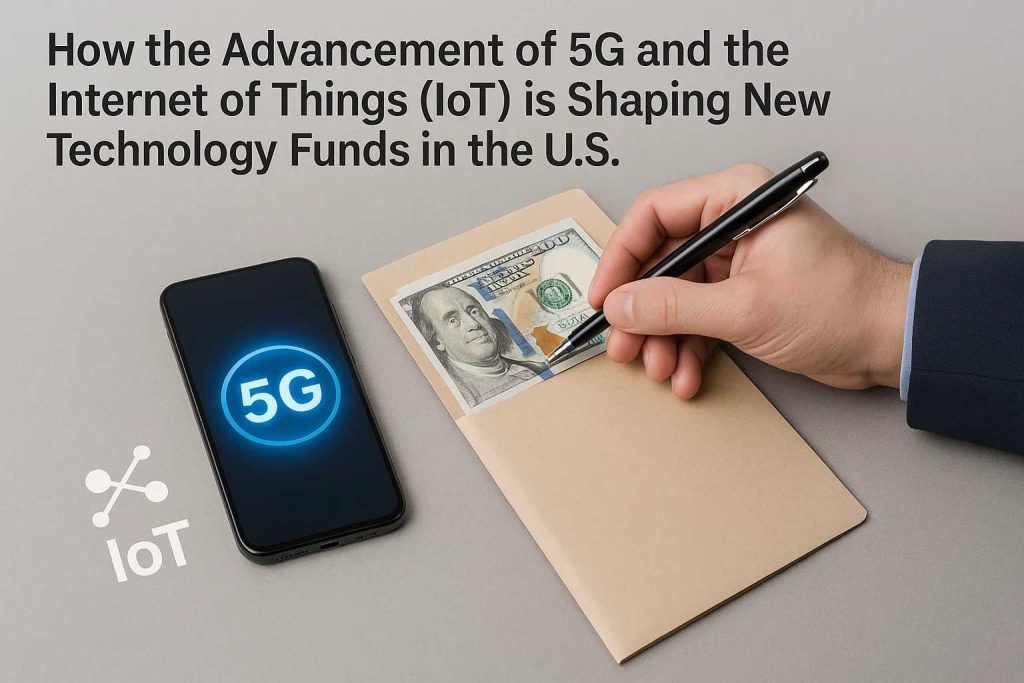The rapid advancement of 5G technology and the proliferation of the Internet of Things (IoT) are creating unprecedented opportunities for investments in the U.S. technology sector. These innovations are not just enhancing connectivity but are also reshaping how new technology funds are developed and managed.
In a landscape driven by connectivity and data, investors are increasingly focusing on capitalizing on these trends. The synergy between these technologies is leading to novel applications and services, which in turn are attracting significant attention from both seasoned investors and newcomers eager to participate in the tech revolution.
How 5G technology is transforming the investment landscape

5G technology is doing more than just boosting mobile internet speeds; it is setting the stage for a smarter, more connected world. Investors are taking note of how this next-generation wireless technology facilitates connectivity that is faster, more reliable, and with lower latency. The impact on industries such as sports streaming, online gaming, and virtual reality is noteworthy, with opportunities emerging for substantial returns.
The emergence of 5G also signals a shift in investment strategies, with a focus on the infrastructure needed to support this new era of connectivity. From telecommunications companies building out 5G networks to startups developing applications that harness this technology, there is no shortage of potential avenues for investment.
Focusing on infrastructure and application development
As the global adoption of 5G accelerates, the critical importance of infrastructure investment becomes more apparent. The transition from previous generations of wireless technology to 5G is not merely an upgrade; it requires a complete overhaul and expansion of network capabilities. Building the necessary network architecture to support this technology, including denser networks of small cells and advanced fiber optic backbones, involves significant capital, with global telecom giants leading the charge in development and deployment. This initial infrastructure push creates massive opportunities in construction, specialized hardware, and engineering services.
However, the investment horizon for 5G extends far beyond the hardware foundation. The software applications that run on 5G networks present fertile ground for growth. 5G enables unprecedented speed and ultra-low latency, which are prerequisites for disruptive technologies like autonomous vehicles, advanced telemedicine, and complex industrial IoT applications. Investing in companies that develop specialized software platforms for these latency-sensitive use cases is a strategic necessity.
Moreover, the surge in demand for 5G-compliant devices and applications is generating dual investment opportunities in both hardware production and software development. This includes manufacturers of high-performance semiconductor components, specialized antennas, and processors optimized for edge computing environments essential to the 5G and IoT ecosystems. With this comprehensive shift, savvy technology funds are actively diversifying their portfolios to include companies that specialize in designing and manufacturing components essential for 5G and IoT ecosystems, betting on the long-term transformation of global connectivity.
The role of IoT in shaping new technology strategies
The Internet of Things is another pivotal force driving change in technology investments. IoT’s ability to connect everyday objects to the internet is revolutionizing data collection and transmission. This influx of data offers unparalleled insights, leading to smarter decision-making and efficiency across various industries, including logistics, healthcare, and energy management.
Furthermore, IoT’s integration with 5G amplifies its capabilities, creating more seamless and responsive networks. This synergy facilitates real-time data analytics and autonomous decision-making processes, essential for sectors such as autonomous vehicles and industrial automation. Investment strategies are increasingly factoring in the growing demand for IoT solutions that enhance operational efficiency and offer new consumer experiences.
Practical applications and investment opportunities in IoT
Investors are increasingly drawn to practical applications of IoT that demonstrate clear value propositions. Smart home devices, wearable technology, and intelligent industrial solutions are leading the way, offering tangible benefits that are appealing to both consumers and enterprises.
The potential for IoT to revolutionize industries is vast, and the key to unlocking these opportunities lies in understanding the specific applications and sectors that stand to benefit the most. By investing in companies that are pioneering IoT solutions, stakeholders can aid the development of innovative products and services that redefine how we interact with the world around us.
Conclusion on the emerging technology investment landscape
In conclusion, the convergence of 5G technology and IoT (Internet of Things) is fundamentally catalyzing significant shifts in the landscape of new technology funds in the U.S.. These innovations are far more than mere communication upgrades; they are not only enhancing global connectivity and data utilization but are fundamentally transforming industries, creating exciting and lucrative opportunities for savvy investors.
The ultra-low latency and massive bandwidth capacity of 5G act as the necessary foundation for the widespread, effective deployment of IoT devices. This synergy enables real-time data processing critical for applications like autonomous manufacturing, smart city infrastructure, and advanced telemedicine. Therefore, the investment focus must be comprehensive.
By strategically focusing on three key areas—infrastructure (e.g., small cell and fiber optics deployment), application development (specialized software for low-latency environments), and practical IoT applications (e.g., smart logistics and industrial automation)—technology funds can effectively position themselves to capitalize on the evolving digital ecosystem.
As these technologies continue to mature and become integrated into core economic sectors, the potential for transformative impact on both the economy and society presents compelling reasons for investors to engage with this next frontier of technological advancement. The firms leading this charge—from semiconductor manufacturers to specialized software developers—represent the future value drivers of the digital economy.


